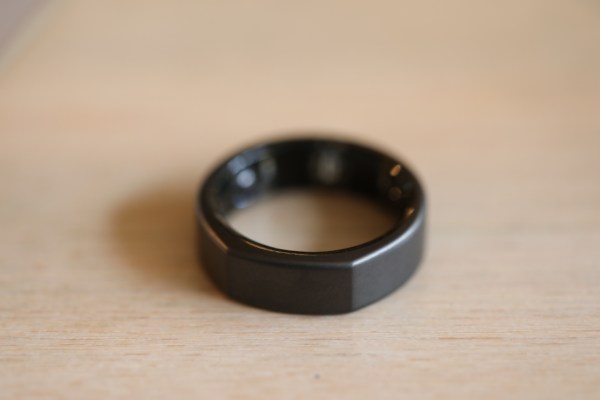Oura, the company behind the Oura Ring lineup of wearable devices, today announced that blood oxygen sensing is rolling out to the third-generation Oura Ring. It’s a long time coming — Oura previewed the feature last fall. But Oura, asserting that the wait was worth it, says oxygen sensing will be able to deliver a “more comprehensive assessment of sleep health and physiology” to owners of its newest flagship product.
The third-generation Oura Ring measures blood oxygen, or SpO2, via red and infrared LED sensors that shine light into a wearer’s finger and use the reflections that bounce back to estimate how much oxygen is in the blood. Richly oxygenated blood reflects more red light than infrared light, while poorly oxygenated blood tends to reflect more infrared light than red light.
The technique is called pulse oximetry, and it’s long been a fixture of wearable devices from Fitbit, Garmin, Apple, Withings and others. Some studies have shown that pulse oximetry is relatively accurate. But experts caution that it’s not clinical grade. (In a blog post detailing the new SpO2 feature, Oura is quick to note that the metrics provided by the Oura Ring aren’t meant to diagnose conditions.)
Oura is layering two metrics on top of the Oura Ring’s blood oxygen measurements: Average blood oxygen and breathing regularity. Average blood oxygen estimates the percentage of oxygen in the blood, while breathing regularity attempts to detect “unusual” breathing patterns — i.e., drops in blood oxygen levels — throughout the night or any nap longer than three hours.
Average blood oxygen and breathing regularity measurements are turned on by default. They can be switched off from the Blood Oxygen Sensing settings in the main menu of the Oura app; Oura notes that the third-gen Oura Ring’s battery life “may be a bit shorter than usual” when the measurements are active.
The arrival of blood oxygen sensing follows a series of ups and downs for the Oura Ring. When the smart ring debuted last fall, Oura revealed that unlocking certain features would require subscribing to a $6-per-month plan. Few of these features were available at launch, frustrating customers — Oura previewed updated sleep-tracking algorithms and heart rate tracking for workouts, but delayed the release.
Despite internal instability (the CEO resigned in December), Oura’s been making an effort to right the ship. Late last year, the company announced that it would defer the aforementioned subscription fee for six months. And the improved heart rate tracking landed in May, with the upgraded sleep-tracking algorithms slated to come this fall. That’s hopefully some consolation to the early adopters.
